
The new Silk Road – in Kazakhstan
Series: Travel diary
After a forced break at the customs checkpoint in Almaty, the crew continues its journey.
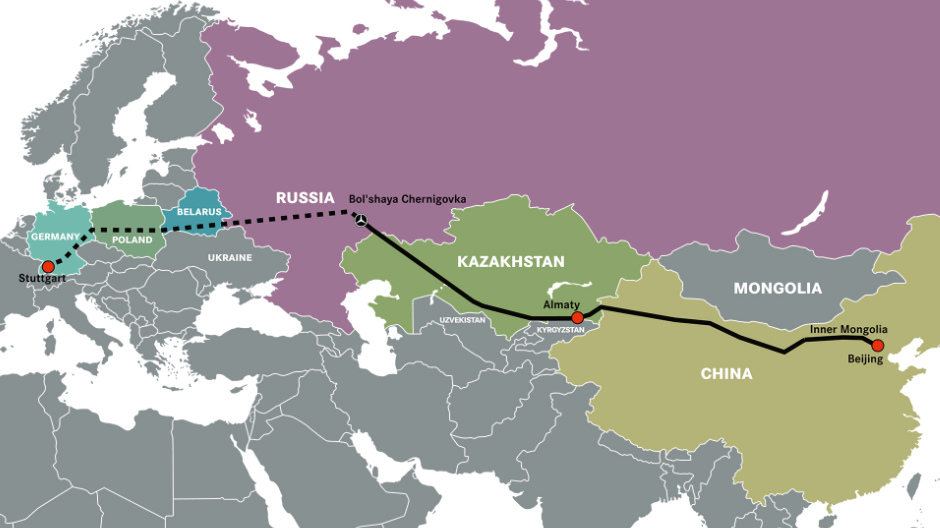
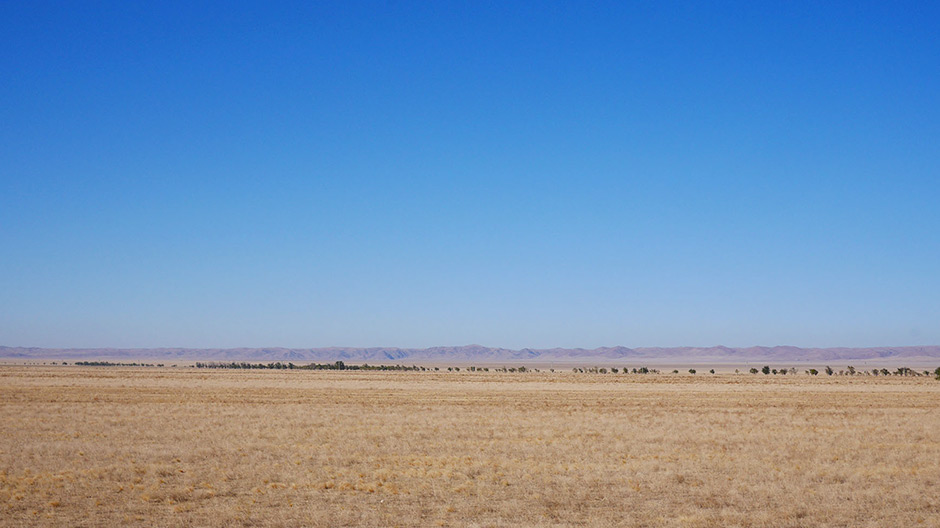
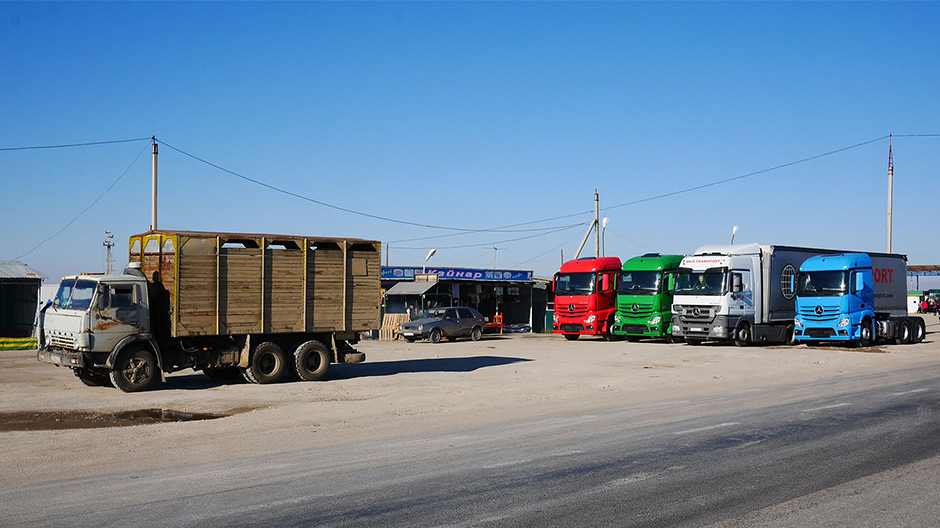
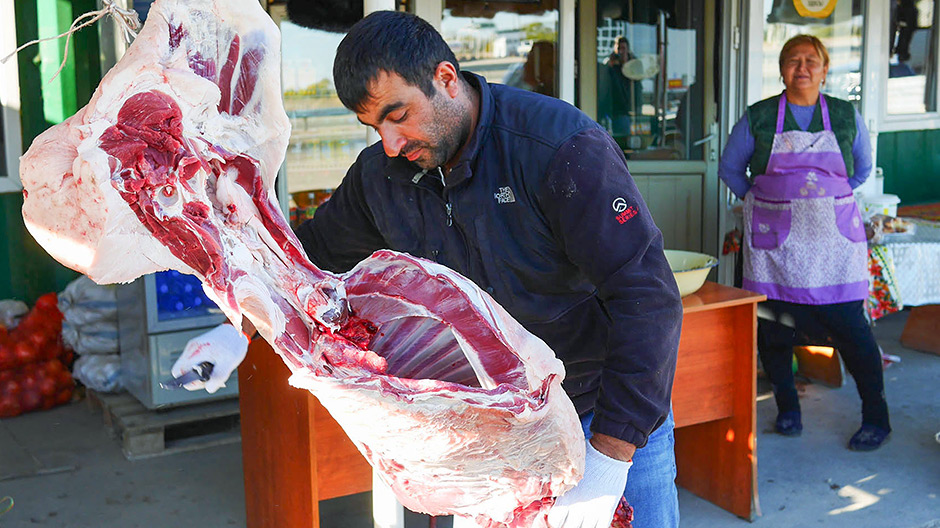
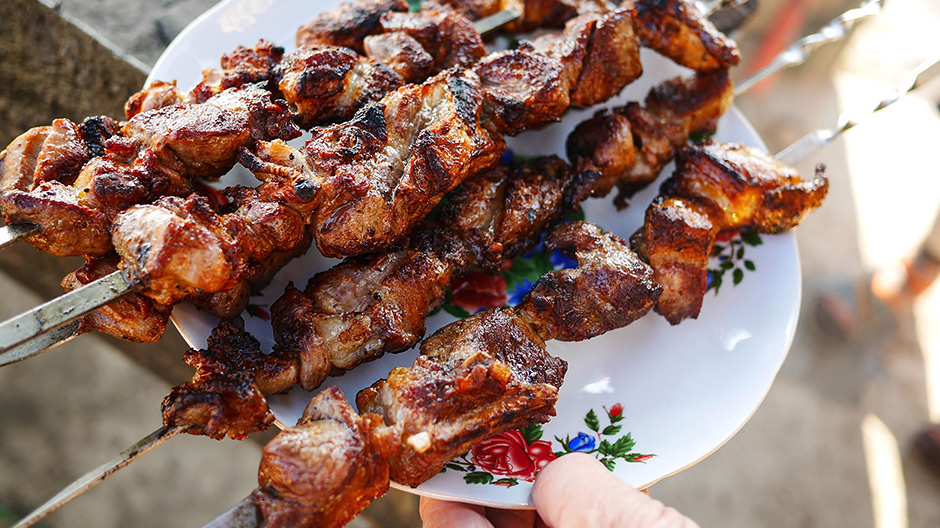
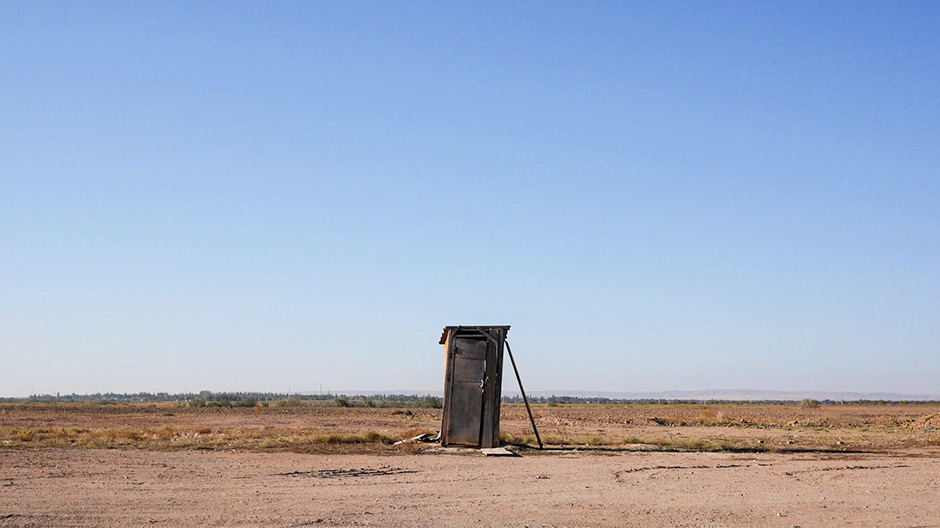
The Kazakh authorities have issued us with a special permit which will now allow us to cross Kazakhstan without valid registration plates. We leave Almaty. Directly alongside our route runs the border fence between Kazakhstan and Kyrgyzstan. It divides up the vast grasslands bordered to the south by the approximately 2400-kilometre stretch of the Tian Shan mountains whose peaks are covered with snow all year round.
Time for some shashlik at the rest area.
It's now the evening and we finally stop for a break on a somewhat unconventional rest area: on the right and left of the road are shipping containers which house small restaurants and shops selling all manner of products stemming from sheep. Socks, leather jackets, meat and much more. The sheep are slaughtered directly in front of the shops and immediately turned into shashlik. Accompanying the kebab today are flat bread, tomato salad and onions – a truly delicious treat.
The restaurant's toilet is, however, just a wooden hut in the middle of a field. Room for improvement on that point, for sure! We drive a little further to the town of Taras and set up for the night on a secure parking area.
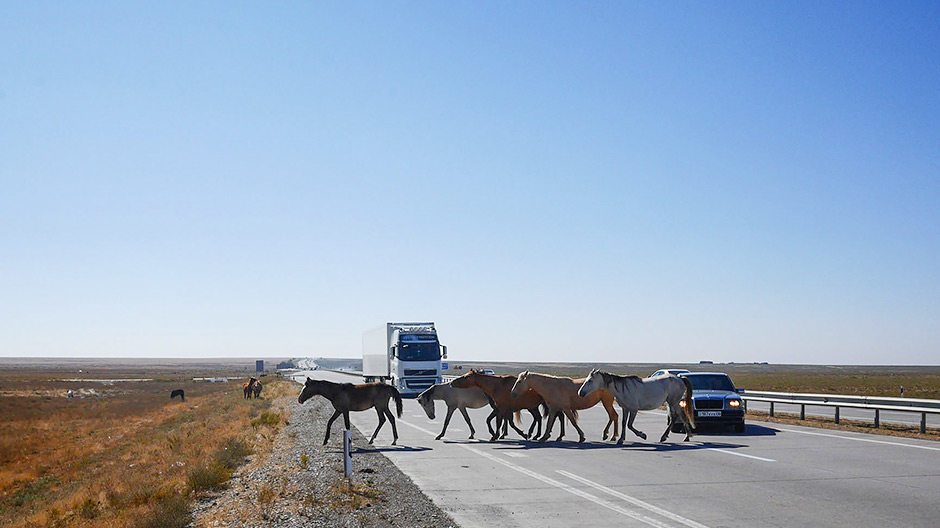
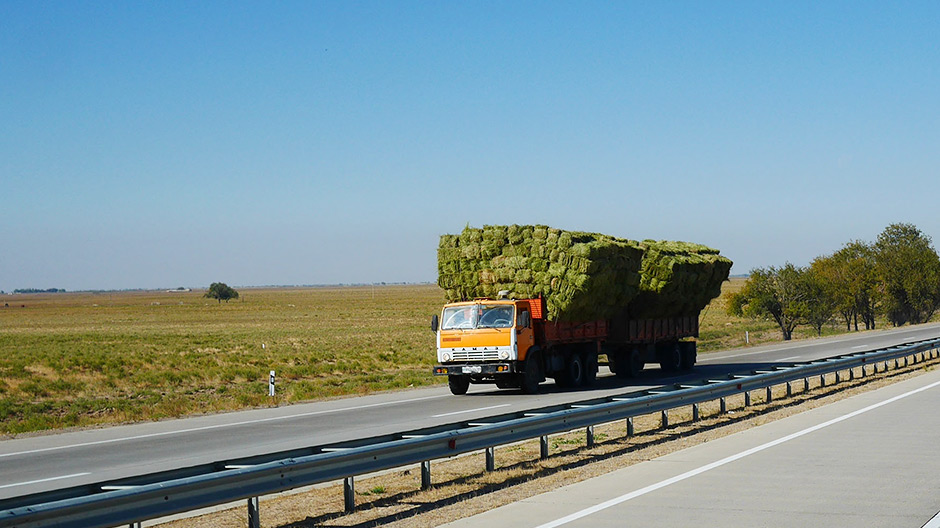
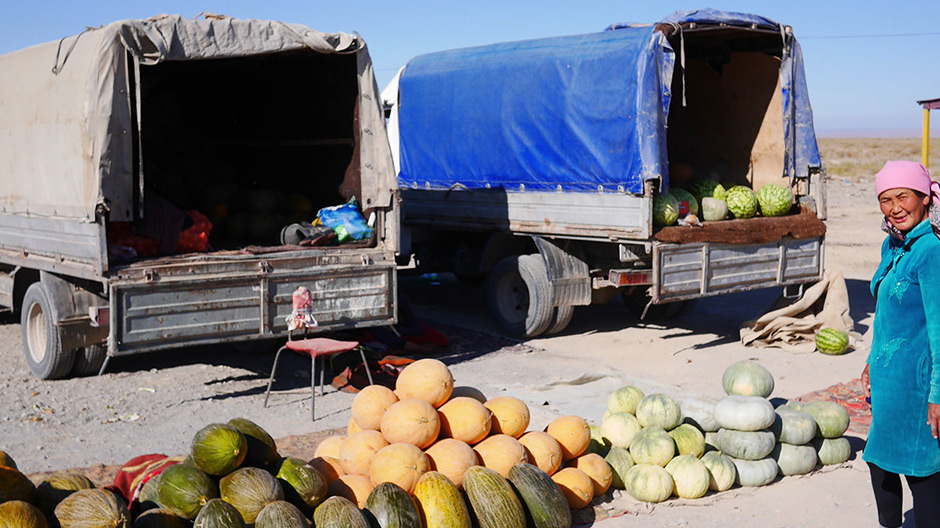
Time is ticking.
6.00 a.m. Cat's lick, fried egg, coffee. We leave the parking area. If we want to keep to schedule, we can't mess around. Taras is now behind us as we head further in a westerly direction. Near Shymkent we leave the east-west route and turn off northbound. Signs already mention the Russian town of Samara – only 2163 kilometres away.
Ice-cold shower.
The livestock fields in this region seem endless. Herders on horses accompany huge herds of sheep and cattle. A caravan of camels passes by in the distance. Every now and again, horses cross the road. We don't take any risks and give them the right of way.
In the afternoon we stop at a small rest area and eat the cheese, salami and flat bread we brought with us. Our desert – melon – was bought directly from a farmer on the other side of the four-lane motorway. Thankfully, a zebra crossing allowed us to get across "safely". We still have a further 400 kilometres to cover until we get to today's destination of Kyzylorda.
We reach the former fortified city of Kyzylorda by sundown. On the rest area, you can take a shower for the equivalent of just one euro. But the water is ice cold – the subsequent heat of the auxiliary heating in the cabs is a welcome feeling.
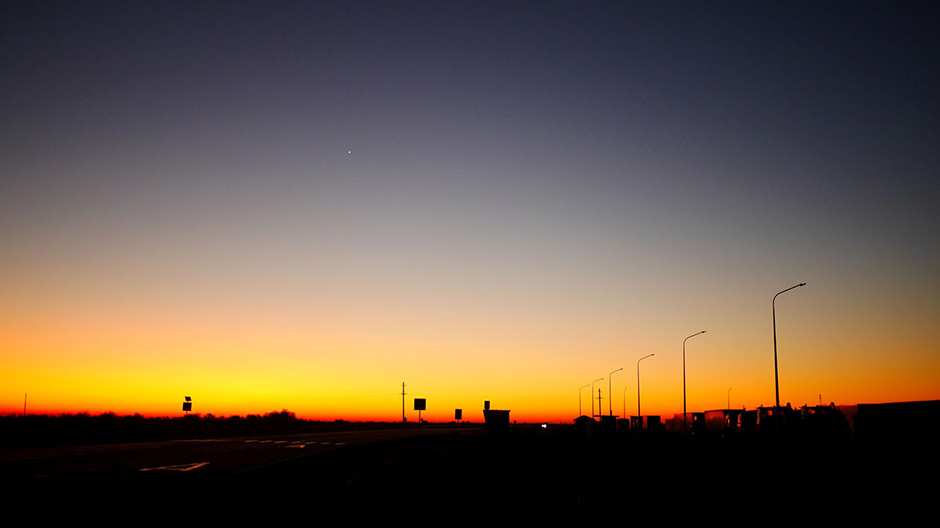
Temperatures around freezing.
We're greeted by morning temperatures around freezing but also by a fantastic sunrise. After several hours of driving through the Kazakh steppe, we reach the restricted area around the Baikonur cosmodrome.
The world's biggest space launch facility was already being used in the Soviet era and is currently on lease to Russia. Visitors are only allowed into the spaceport with special permission. A taxi driver offers us a ride to Baikonur for 50 euros. We have to keep to our schedule and politely decline the offer.
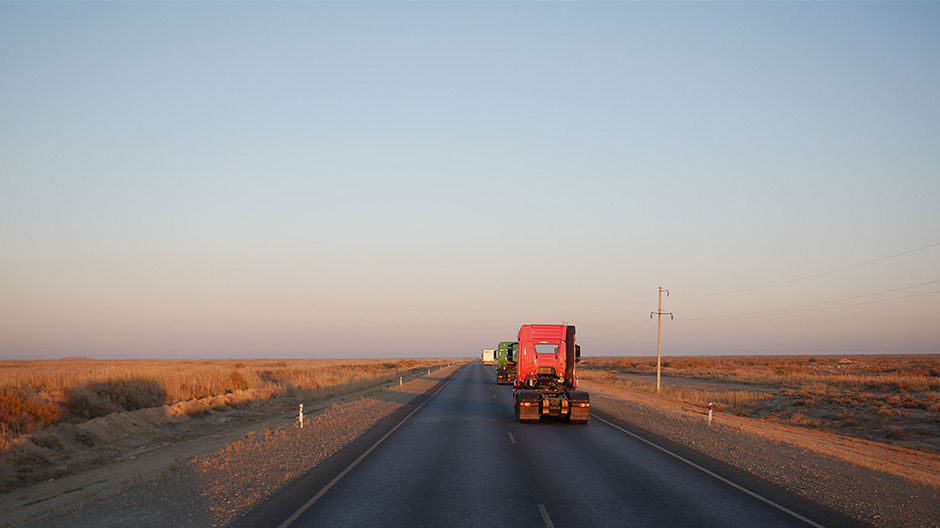
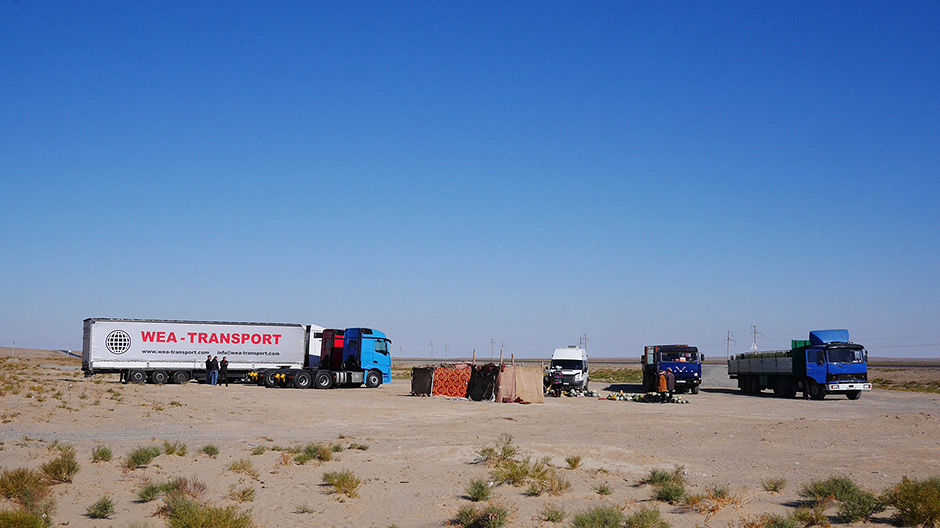
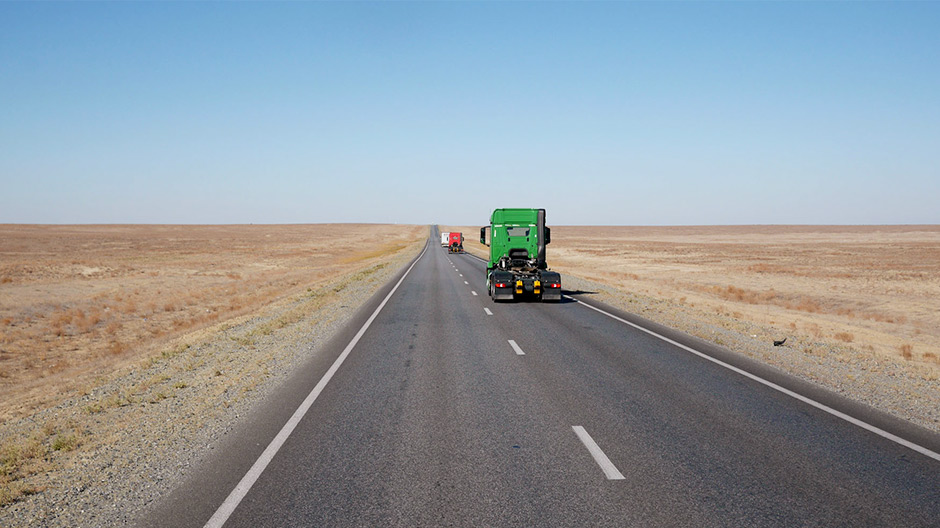
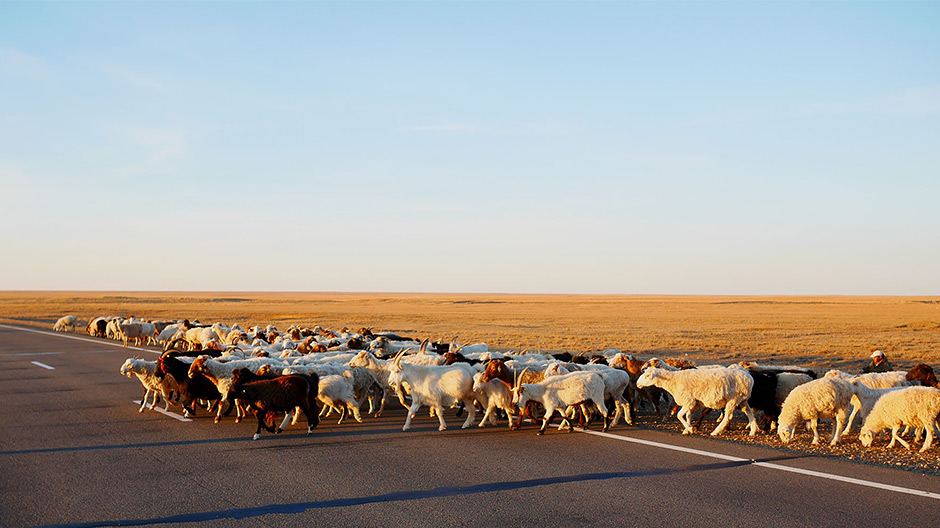

A lake without water.
In a village in the middle of the steppe, locals wave to us and try to sell us dried fish. A quick look at the map shows us that we're now north of the Aral Sea. Formerly the fourth-biggest inland body of water in the world, today it mostly resembles a dried-up, barren plain. If it wasn't for the fact that the map shows a lake here, we certainly wouldn't have guessed that's what was once here.
We continue driving for a few more hours until Lane Keeping Assist starts buzzing at us. A clear message that we've got to stop for today and need to find a place to spend the night.
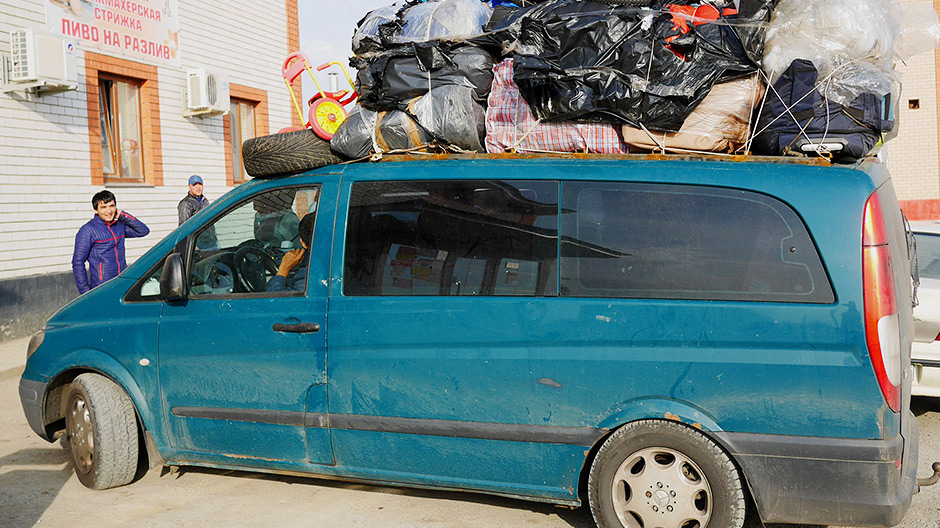
En route to the border.
Overnight we acquired some new neighbours. Alongside us, several families from Kyrgyzstan decided to stop for the night too. The cars, among which a Mercedes-Benz Vito, look like packhorses with whole mountains of luggage on the roof. What in Germany would clearly be a case of overloading a vehicle and improperly securing a load is, in Kazakhstan, no problem at all. The families had been working in Russia and are now on their way back home to Kyrgyzstan with everything they possess.
Time to leave. The road reduces to a single carriageway and its condition keeps getting worse. On the opposing carriageway, an old truck has slid down the embankment. The driver managed to escape unharmed through the broken windscreen and is now on the phone. It'll be a while before help gets here. But we can at least reassuredly continue on our way.
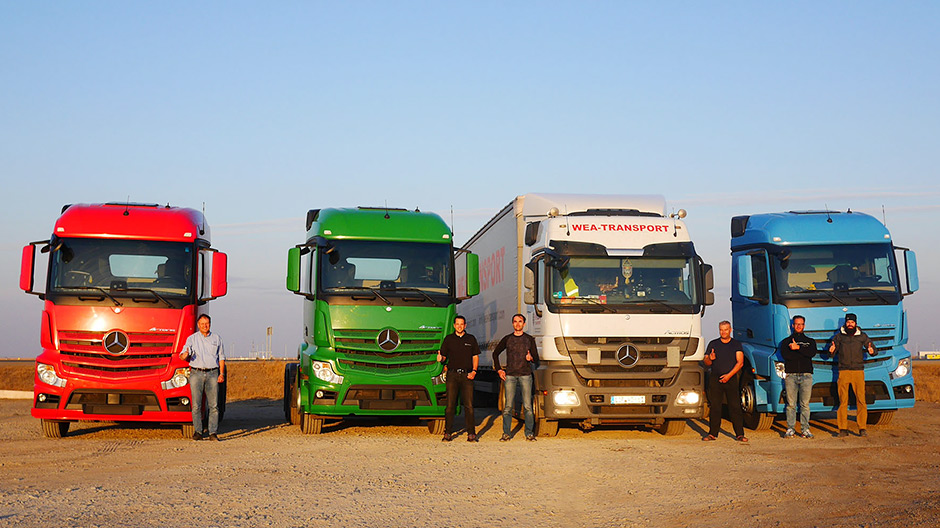
The Silk Road crew in Kazakhstan.
Final tour around Kazakhstan.
Ahead of our convoy are now the final few kilometres of Kazakhstan. Now it's time for us to get hold of some Russian registration plates. Our driver from Belarus relentlessly tries to reach the Russian authorities by phone. Thankfully, he's successful and we can pick up the number plates from the police on Saturday morning in a small village the other side of the border.
In complete darkness, we arrive at the border with Russia where the trucks form an orderly queue. We don't have any cargo on-board and cross the border problem-free. Just a few more kilometres to Bolshaya Chernigovka, and then we can stop for today. This is where we should be able to pick up our registration plates tomorrow.
The next day welcomes us with dark clouds and rain. Plus, the whole thing with the transit plates isn't so easy after all. We decide to make a 24-hour break here. After all, even in Kazakhstan and Russia, our driving times still need to be adhered to.
All we have to do is fix the registration plates to the vehicles and then our work for the day is done and we can get to bed. In any case, we're in good company. The other drivers on the rest area have gathered around a table made of Euro pallets and have lit the cooker.
Photos: Eberhard Joos




Comment
Please log in to post a comment.
12 comments
da wir selbst eine Reise in diese Regionen (Kasachstan, Kirgistan, Iran, Mongolei, Rußland) planen, stellt sich die Frage nach der Verfügbarkeit von Diesel für Motoren nach EU6-Norm bzw. nach AdBlue?
Grüße
Klaus
da wir selbst eine Reise in diese Regionen (Kasachstan, Kirgistan, Iran, Mongolei, Rußland) planen, stellt sich die Frage nach der Verfügbarkeit von Diesel für Motoren nach EU6-Norm bzw. nach AdBlue?
Grüße
Klaus
noch ein kleiner Nachtrag zu AdBlue:
Zwar nutzen nicht so viele Fahrzeuge in Kasachstan und Zentral-Asien AdBlue wie in Zentral-Europa. Bei Vertragshändlern oder spezialisierten Shops ist es aber durchaus verfügbar.
In Russland ist die Verfügbarkeit tatsächlich recht hoch.
noch ein kleiner Nachtrag zu AdBlue:
Zwar nutzen nicht so viele Fahrzeuge in Kasachstan und Zentral-Asien AdBlue wie in Zentral-Europa. Bei Vertragshändlern oder spezialisierten Shops ist es aber durchaus verfügbar.
In Russland ist die Verfügbarkeit tatsächlich recht hoch.
das klingt echt spannend!
Generell kann man sicherlich sagen, dass die Verfügbarkeit von Diesel nach EU6-Norm bzw. AdBlue in diesen Regionen nicht flächendeckend gewährleistet ist. Im Umfeld von Metropolen ist diese aber nicht ausgeschlossen.
Vor deiner Reise solltest du dich also ausgiebig darüber informieren ob und wenn ja wo der passende Kraftstoff für dein Fahrzeug erhältlich ist.
Ein paar weitere Informationen zum Schwefelgehalt im Diesel in verschiedenen Ländern findest du hier:
https://roadstars.mercedes-benz.com/ultra-low-sulfur-diesel-landingpages-de
https://bevo.mercedes-benz.com/bevolisten/136.1_de.html
https://bevo.mercedes-benz.com/bevolisten/136.2_de.html
Solltest du deine Reise antreten, hoffen wir natürlich auf unserer Pinnwand immer auf dem Laufenden gehalten zu werden 😉
das klingt echt spannend!
Generell kann man sicherlich sagen, dass die Verfügbarkeit von Diesel nach EU6-Norm bzw. AdBlue in diesen Regionen nicht flächendeckend gewährleistet ist. Im Umfeld von Metropolen ist diese aber nicht ausgeschlossen.
Vor deiner Reise solltest du dich also ausgiebig darüber informieren ob und wenn ja wo der passende Kraftstoff für dein Fahrzeug erhältlich ist.
Ein paar weitere Informationen zum Schwefelgehalt im Diesel in verschiedenen Ländern findest du hier:
https://roadstars.mercedes-benz.com/ultra-low-sulfur-diesel-landingpages-de
https://bevo.mercedes-benz.com/bevolisten/136.1_de.html
https://bevo.mercedes-benz.com/bevolisten/136.2_de.html
Solltest du deine Reise antreten, hoffen wir natürlich auf unserer Pinnwand immer auf dem Laufenden gehalten zu werden 😉
Für so ein einmaliges "Abenteuer" würde ich alles liegen u. stehen lassen um dabei sein zu können 😄
... ich träum dann mal weiter ... 😉
Für so ein einmaliges "Abenteuer" würde ich alles liegen u. stehen lassen um dabei sein zu können 😄
... ich träum dann mal weiter ... 😉
Wenn einer eine Reise tut, hat er 'was zu erzählen...
Lebendiger Bericht, schöne Bilder - ganz besonders gefällt mir das Sonnenuntergangsbild 😄. Hoffentlich ist die Tour noch ein paar tausend Restkilometer...
Gruß
Klaus
Wenn einer eine Reise tut, hat er 'was zu erzählen...
Lebendiger Bericht, schöne Bilder - ganz besonders gefällt mir das Sonnenuntergangsbild 😄. Hoffentlich ist die Tour noch ein paar tausend Restkilometer...
Gruß
Klaus